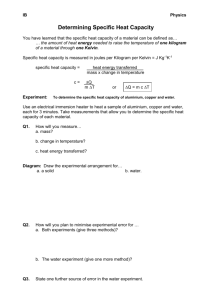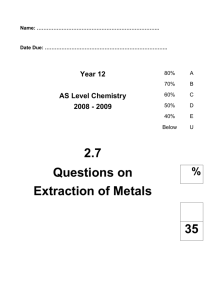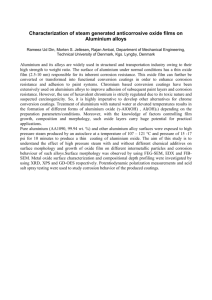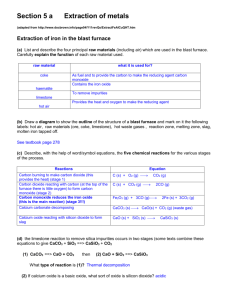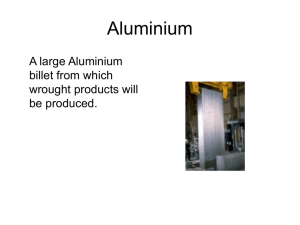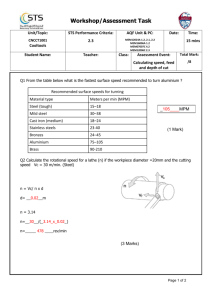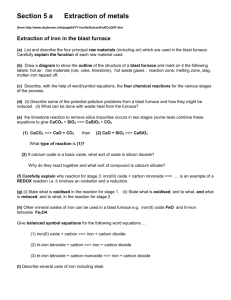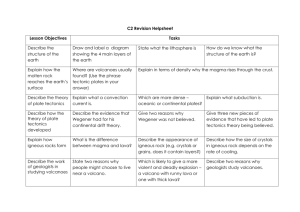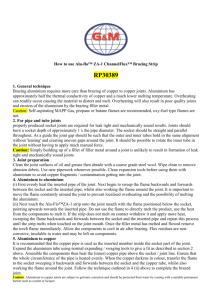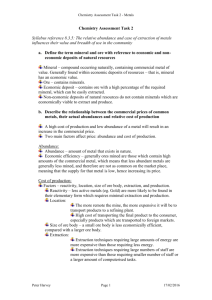Chapter 10 Occurrence and extraction of metals
advertisement
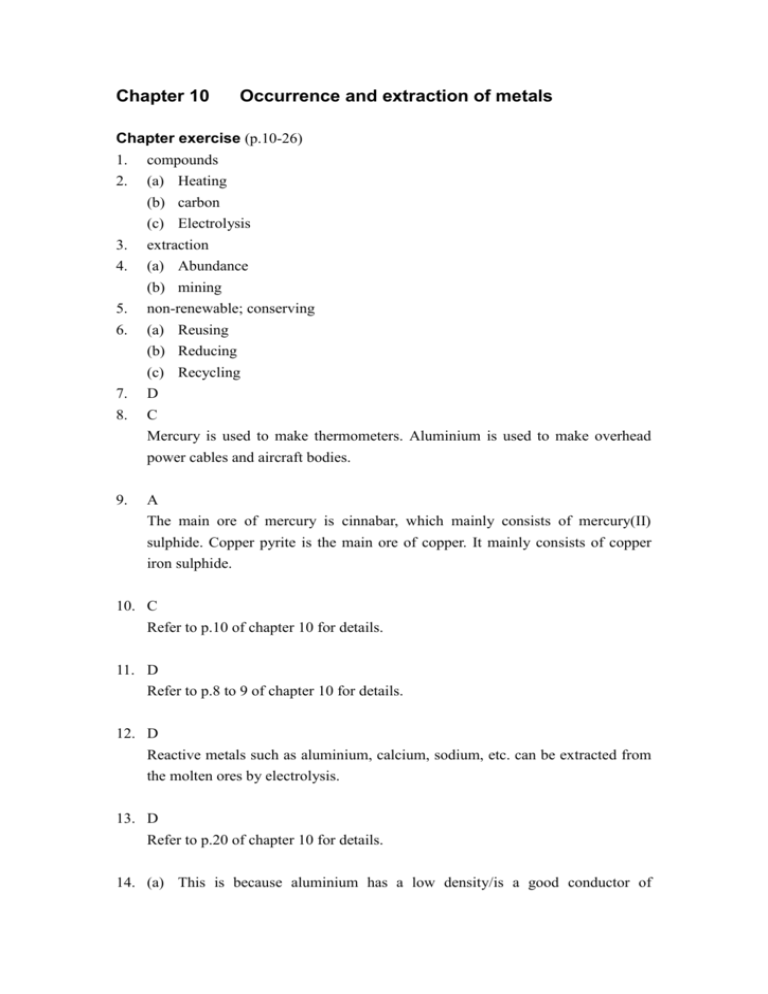
Chapter 10 Occurrence and extraction of metals Chapter exercise (p.10-26) 1. compounds 2. (a) Heating (b) carbon (c) Electrolysis 3. extraction 4. (a) Abundance (b) mining 5. non-renewable; conserving 6. (a) Reusing (b) Reducing (c) Recycling 7. 8. D C Mercury is used to make thermometers. Aluminium is used to make overhead power cables and aircraft bodies. 9. A The main ore of mercury is cinnabar, which mainly consists of mercury(II) sulphide. Copper pyrite is the main ore of copper. It mainly consists of copper iron sulphide. 10. C Refer to p.10 of chapter 10 for details. 11. D Refer to p.8 to 9 of chapter 10 for details. 12. D Reactive metals such as aluminium, calcium, sodium, etc. can be extracted from the molten ores by electrolysis. 13. D Refer to p.20 of chapter 10 for details. 14. (a) This is because aluminium has a low density/is a good conductor of electricity/ductile. (Any TWO) (b) This is because aluminium has delocalized electrons in the structure to conduct electricity. (c) This is because copper has a higher density than aluminium. The overhead power cables made of copper may be quite heavy. (d) This is because silver is much more expensive than aluminium. 15. (a) (i) Aluminium. This is because aluminium is corrosion resistant, strong and has a low density (hence convenient to carry). (ii) Iron. This is because iron is strong, cheap, malleable and ductile. (iii) Gold. This is because gold is extremely corrosion resistant, malleable and ductile. (b) This is because gold exists as free element in nature and can be extracted easily by physical method. (c) This is because iron is much more abundant than copper in the Earth’s crust. 16. (a) Lead metal (b) Carbon dioxide heat (c) lead(II) oxide + carbon lead + carbon dioxide (d) (i) Yes heat copper(II) oxide + carbon copper + carbon dioxide (ii) No This is because magnesium is a reactive metal. 17. (a) (i) Electrolysis of molten ore electricity (ii) aluminium oxide aluminium + oxygen (iii) Potassium/sodium/calcium/magnesium (Any ONE) (b) (i) Word equation for the extraction of mercury from cinnabar: heat mercury(II) sulphide + oxygen mercury + sulphur dioxide Word equation for the extraction of zinc from zinc blende: heat Step 1: zinc sulphide + oxygen zinc oxide + sulphur dioxide heat Step 2: zinc oxide + carbon zinc + carbon dioxide (ii) Aluminium, zinc, mercury (iii) Mercury, zinc, aluminium 18. (a) Tin is malleable/corrosion resistant/non-toxic. (Any ONE) (b) They will be disposed of in the landfill site. (c) Economic importance of recycling metals: It saves energy and other resources such as electricity, water and fuels. Environmental importance of recycling metals (Any ONE): - It saves metal resources. - It reduces metal waste and land used for waste disposal. - It reduces pollution arising from the mining and extraction of metals. (d) Reuse these mooncake containers to store things. Recycle these mooncake containers by putting them into metal recycling bins.

